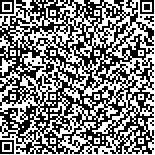|
|
|
| |
|
|
| 本文已被:浏览 285次 下载 183次 |

码上扫一扫! |
|
|
| 食物丰度对褶皱臂尾轮虫耐受盐度能力的复杂效应 |
|
孙运菲, 李燕楠, 王公元, 杨州
|
|
南京师范大学 生命科学学院, 江苏 南京 210023
|
|
| 摘要: |
| 由于海洋环境的复杂性, 一些生态因子常处于波动状态。为了阐明不同食物丰度条件下, 褶皱臂尾轮虫对盐度的耐受能力是否会发生变化, 本实验在选取 5 个盐度(S=3、 5、 20、 30、 45)基础上, 结合不同丰度的球形棕囊藻种群, 模拟轮虫在自然环境中经历的一系列多样化的食物丰度, 检测轮虫生活史参数的变化。结果表明, 除了存活时间外, 轮虫发育时间和繁殖力均受到盐度与食物丰度的显著交互作用。 在所有盐度下, 棕囊藻丰度较低时, 轮虫的发育成熟所需时间均显著延长, 且繁殖力受到显著抑制, 但这种限制作用可随着棕囊藻丰度的增加呈指数式快速恢复至各自盐度下的正常值。不管食物条件如何, 当盐度为 20 时, 轮虫的首次繁殖时间最短且总后代数最高, 其次为盐度 30, 其他 3 个盐度(S=3, 5, 45)处理的轮虫则显著受到不良影响, 而食物丰度的增加在一定程度上可以缓解低渗和高渗环境给轮虫繁殖带来的负面影响。综合不同盐度不同棕囊藻丰度下轮虫的生活史参数可以发现, 轮虫的寿命和繁殖之间存在权衡, 且这种权衡在适宜盐度(S=20、 30)下表现的最明显。上述发现对于准确评估变化环境下浮游动物的综合表现具有重要指导意义。 |
| 关键词: 褶皱臂尾轮虫 球形棕囊藻 盐度 食物丰度 生活史 |
| DOI:10.11759/hykx20230821001 |
| 分类号: |
| 基金项目:国家自然科学基金项目(32101357);江苏省高等学校优势学科建设项目 |
|
| Complex effects of food abundance on the salinity tolerance of Brachionus plicatilis |
|
SUN Yunfei, LI Yannan, WANG Gongyuan, YANG Zhou
|
|
School of Biological Sciences, Nanjing Normal University, Nanjing 210023, China
|
| Abstract: |
| Due to the complexity of the marine environment, the status of some ecological factors often fluctuates. To elucidate whether the tolerance of Brachionus plicatilis to differential salinity levels changes under different food abundance conditions, this study combined five salinity levels (3, 5, 20, 30, and 45) with different abundances of Phaeocystis globosa to simulate a series of diverse food conditions experienced by rotifers in their natural environment and recorded the changes in rotifer life history parameters. The results showed that except for survival time, the developmental time and reproductive capacity of rotifers were significantly affected by the interaction between salinity and food abundance. At all salinity levels, when the abundance of P. globosa was low, the time required for rotifer development and maturation was significantly prolonged, and reproductive capacity was significantly inhibited. However, this limiting effect was exponentially recovered to normal values at their respective salinity levels with an increased abundance of P. globosa. Regardless of food conditions, at a salinity level of 20, the first reproduction time of rotifers was the shortest, and the total offspring was the highest, followed by treatment at a salinity level of 30. Rotifers in the other three salinity levels (3, 5, and 45) were significantly negatively affected, and an increase in food abundance could, to some extent, alleviate the negative effects of low and high osmotic environments on rotifer reproduction. Considering the life history parameters of rotifers under different salinity levels and abundances of P. globosa, a trade-off was evident between the lifespan and reproduction of rotifers, and this trade-off was more pronounced at suitable salinity levels (20 and 30). These findings have important guiding significance for accurately evaluating the comprehensive performance of zooplankton in changing environments. |
| Key words: Brachionus plicatilis Phaeocystis globosa salinity food abundance life history |
|
|
|
|
|
|
